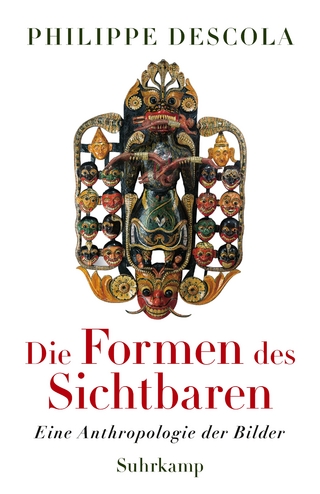
The Revival of Beauty
Aesthetics, Experience, and Philosophy
Seiten
2024
Routledge (Verlag)
978-1-032-48076-3 (ISBN)
Routledge (Verlag)
978-1-032-48076-3 (ISBN)
- Lieferbar (Termin unbekannt)
- Versandkostenfrei innerhalb Deutschlands
- Auch auf Rechnung
- Verfügbarkeit in der Filiale vor Ort prüfen
- Artikel merken
This book provides original descriptive accounts of two schools of thought in the philosophy of beauty: the 20th-century “Anti-Aesethetic” movement and the 21st-century “Beauty Revival” movement. It also includes a positive defence of beauty as a lived experience extrapolated from Beauty-Revival position.
This book provides original descriptive accounts of two schools of thought in the philosophy of beauty: the 20th-century “Anti-Aesthetic” movement and the 21st-century “Beauty Revival” movement. It also includes a positive defence of beauty as a lived experience extrapolated from Beauty-Revival position.
Beauty was traditionally understood in the broadest sense as a notion that engages our sense perception and embraces everything evoked by that perception, including mental products and affective states. This book constructs and places in parallel with one another the Anti-Aesthetic and Beauty-Revival movements. In the author’s view, Anti-Aestheticism is devoted to a decisive negation of beauty—denying its importance as a philosophical notion and its significance as a lived experience. It suggests that beauty is a merely sensual experience, which can be used, at best, as a distraction from justice and, at worst, as an instrument of evil. Alternatively, the Beauty-Revival movement advances arguments for beauty as an experience that extends primarily to sensual experience, but which also calls forth mental products and cognitive and affective states evoked by that experience. After reconstructing these two positions, the author elaborates on the notion of beauty as a lived experience through three key moments which occur in the process of our experiencing beautiful objects. These moments are (a) the conditions that constitute an experience of beauty, (b) the attitudinal features most likely to lead to the experience of beauty, and (c) the results of the experience of beauty.
The Revival of Beauty will be of interest to scholars and advanced students working in aesthetics, history of philosophy, and art history.
This book provides original descriptive accounts of two schools of thought in the philosophy of beauty: the 20th-century “Anti-Aesthetic” movement and the 21st-century “Beauty Revival” movement. It also includes a positive defence of beauty as a lived experience extrapolated from Beauty-Revival position.
Beauty was traditionally understood in the broadest sense as a notion that engages our sense perception and embraces everything evoked by that perception, including mental products and affective states. This book constructs and places in parallel with one another the Anti-Aesthetic and Beauty-Revival movements. In the author’s view, Anti-Aestheticism is devoted to a decisive negation of beauty—denying its importance as a philosophical notion and its significance as a lived experience. It suggests that beauty is a merely sensual experience, which can be used, at best, as a distraction from justice and, at worst, as an instrument of evil. Alternatively, the Beauty-Revival movement advances arguments for beauty as an experience that extends primarily to sensual experience, but which also calls forth mental products and cognitive and affective states evoked by that experience. After reconstructing these two positions, the author elaborates on the notion of beauty as a lived experience through three key moments which occur in the process of our experiencing beautiful objects. These moments are (a) the conditions that constitute an experience of beauty, (b) the attitudinal features most likely to lead to the experience of beauty, and (c) the results of the experience of beauty.
The Revival of Beauty will be of interest to scholars and advanced students working in aesthetics, history of philosophy, and art history.
Catherine Wesselinoff is a lecturer at the University of Notre Dame, Australia, where she teaches courses in the history of philosophy, political philosophy, ethics, and aesthetics. She completed her PhD at the University of Sydney in 2022.
General Introduction Part 1: Kalliphobia: The Case Against Beauty Part 1: Introduction 1. Beauty as the "Merely Sensuous" 2. Beauty and Evil 3. Art without Beauty Part 1: Conclusion Part 2: Philocaly: The Case for Beauty Part 2: Introduction 4. Reply to the Anti-Aesthetic 5. Arguments for Beauty 6. Neo-Aestheticism Part 2: Conclusion Part 3: Kallistics: The Verdict Part 3: Introduction 7. The Acquaintance Principle 8. The Aesthetic Attitude 9. Aesthetic Emotion Part 3: Conclusion General Conclusion
| Erscheinungsdatum | 06.09.2023 |
|---|---|
| Reihe/Serie | Routledge Research in Aesthetics |
| Verlagsort | London |
| Sprache | englisch |
| Maße | 152 x 229 mm |
| Gewicht | 453 g |
| Themenwelt | Kunst / Musik / Theater ► Allgemeines / Lexika |
| Kunst / Musik / Theater ► Kunstgeschichte / Kunststile | |
| Geisteswissenschaften ► Philosophie | |
| ISBN-10 | 1-032-48076-9 / 1032480769 |
| ISBN-13 | 978-1-032-48076-3 / 9781032480763 |
| Zustand | Neuware |
| Informationen gemäß Produktsicherheitsverordnung (GPSR) | |
| Haben Sie eine Frage zum Produkt? |
Mehr entdecken
aus dem Bereich
aus dem Bereich
eine Anthropologie der Bilder
Buch | Hardcover (2023)
Suhrkamp (Verlag)
68,00 €
Wie Kunst unser Denken bereichert
Buch | Softcover (2022)
E.A. Seemann in (Verlag)
28,00 €


